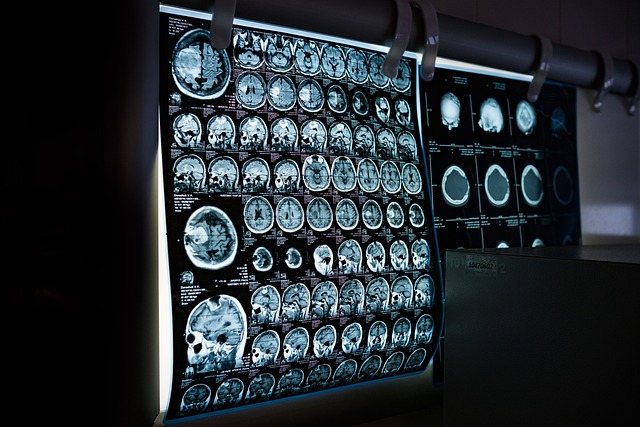Innovative Breakthroughs Shaping Bladder Cancer Care Today
Bladder cancer is becoming one of the most studied cancers due to the increasing prevalence and the need for innovative treatment approaches. There are significant breakthroughs and advancements in the field that are reshaping bladder cancer care today, providing hope and better outcomes for patients. The ongoing research and development efforts are crucial as they enhance treatment modalities and improve patients’ quality of life.

Bladder cancer care is undergoing a measurable shift as research translates into practical options across the care pathway. In the United States, clinicians increasingly combine immunotherapy, targeted approaches, improved surgical techniques, and biomarker-informed decisions to personalize treatment. Below is a clear look at how these advances are influencing diagnosis, therapy selection, and follow-up today.
This article is for informational purposes only and should not be considered medical advice. Please consult a qualified healthcare professional for personalized guidance and treatment.
Advancements in Immunotherapy
Immunotherapy has moved into multiple stages of bladder cancer care. Intravesical bacillus Calmette–Guérin (BCG) remains a cornerstone for certain non–muscle-invasive cases, while systemic checkpoint inhibitors are now established options in advanced disease or after BCG-unresponsive disease in defined scenarios. Agents such as pembrolizumab and atezolizumab have FDA approvals in specific settings, and maintenance immunotherapy following chemotherapy can help extend disease control for eligible patients. Clinicians are also refining how they manage immune-related side effects, using standardized monitoring and early intervention. Ongoing studies are exploring combinations—pairing checkpoint inhibitors with antibody-drug conjugates or targeted therapies—to potentially improve response durability without substantially increasing toxicity.
Targeted Therapies and Precision Medicine
Molecular profiling is increasingly used to identify changes that may inform therapy. When alterations in FGFR2/3 are present, an FGFR inhibitor such as erdafitinib may be considered in appropriate cases. Antibody-drug conjugates, including enfortumab vedotin and sacituzumab govitecan, deliver cytotoxic agents directly to cancer cells that express specific targets, offering options for patients previously treated with chemotherapy or immunotherapy. Precision strategies also consider DNA damage repair genes and other biomarkers that could influence the benefit of platinum chemotherapy or immunotherapy. While not every tumor harbors targetable changes, broader use of next-generation sequencing is helping clinicians match more people to potentially effective therapies, and informs clinical trial discussions when standard options have been exhausted.
Enhanced Surgical Techniques
Surgery remains central in bladder cancer management, and technique refinements are improving perioperative outcomes for many. Transurethral resection of bladder tumor (TURBT) is benefitting from enhanced visualization, such as blue-light cystoscopy, which can reveal additional lesions and assist in more complete resections. For muscle-invasive disease, radical cystectomy performed with open or robot-assisted approaches is widely used. Robotic platforms can enable precise dissection and, in experienced hands, may reduce blood loss and aid recovery timelines. Nerve-sparing methods are considered when feasible, and urinary diversion choices—including ileal conduit, continent cutaneous reservoir, or orthotopic neobladder—are discussed based on patient goals and clinical factors. Enhanced Recovery After Surgery (ERAS) protocols, now common in many centers, support earlier mobilization, optimized pain control, and nutritional strategies.
Bladder Cancer Biomarkers
Biomarker use is expanding from diagnosis through surveillance. Urine cytology, long used to detect high-grade disease, is complemented by assays such as urine-based protein tests and UroVysion FISH to improve detection in select scenarios. Tissue markers like PD-L1 are sometimes used to help inform immunotherapy decisions, while genomic findings—such as FGFR alterations—can guide targeted options. Circulating tumor DNA (ctDNA) is an active area of research: it may help identify minimal residual disease, signal early recurrence, or assist in tailoring adjuvant therapy decisions. Although not all biomarker tests are appropriate for every case, integrating the right test at the right time can refine risk assessment, reduce unnecessary procedures, and personalize follow-up schedules.
Advancements in Clinical Trials
Clinical trials continue to shape the standard of care by testing combinations and sequencing of therapies across disease stages. More studies are designed to be adaptive—basket and umbrella trials can evaluate multiple targeted agents in parallel based on tumor characteristics. Eligibility criteria are also evolving to be more inclusive, allowing broader participation from diverse communities in the United States. Remote monitoring, local services for certain procedures, and partnerships among academic centers and community practices can reduce travel and improve access in your area. Patients and care teams often review ClinicalTrials.gov and institutional listings to identify trials that align with individual medical histories and preferences, ensuring that investigational options are considered alongside approved therapies.
A modern care plan often weaves these elements together. Early-stage disease may be managed with optimized endoscopic techniques and intravesical therapies, while high-risk or muscle-invasive disease could involve neoadjuvant chemotherapy, cystectomy, and, in selected cases, adjuvant treatment informed by pathology and biomarkers. In advanced stages, systemic therapy selection now routinely considers prior treatments, molecular findings, performance status, and patient goals. Throughout, supportive care—including symptom management, nutrition, pelvic floor therapy, and psychosocial resources—remains essential for quality of life.
As research advances, multidisciplinary coordination is critical. Urologists, medical oncologists, radiation oncologists, pathologists, radiologists, nurses, and navigators collaborate to align testing, treatment timing, and surveillance. This approach helps ensure that innovations—immunotherapy, targeted agents, surgical refinements, and biomarker-driven decisions—are applied thoughtfully. While not every development suits every case, the growing toolkit enables more personalized strategies, giving clinicians and patients additional ways to balance effectiveness with safety and day-to-day well-being.




